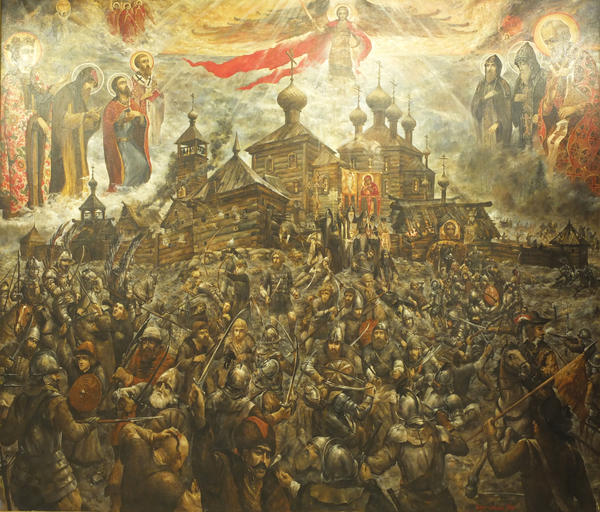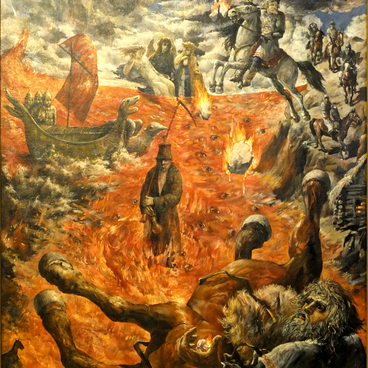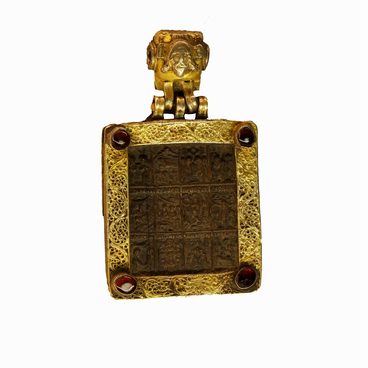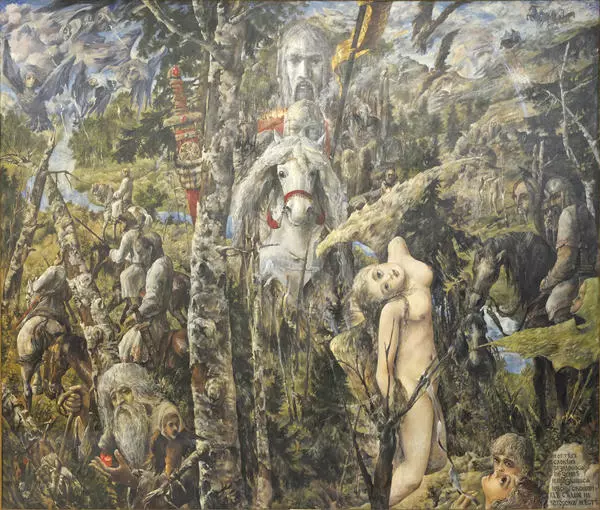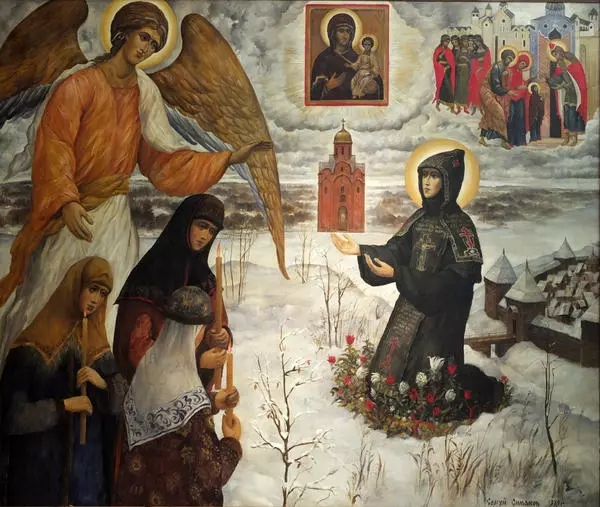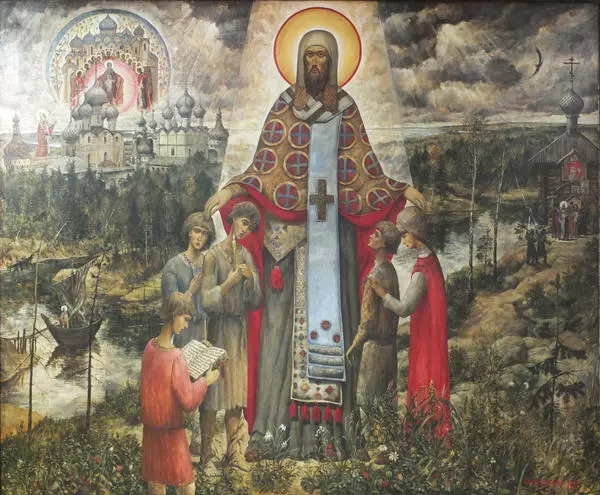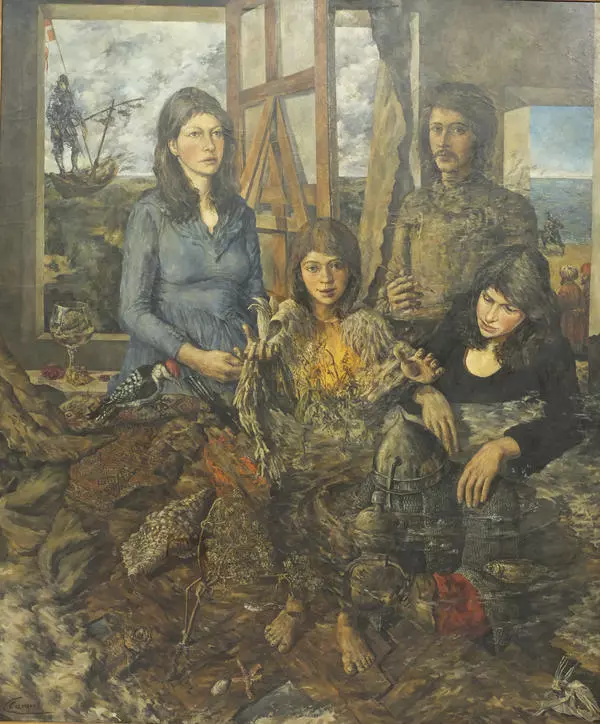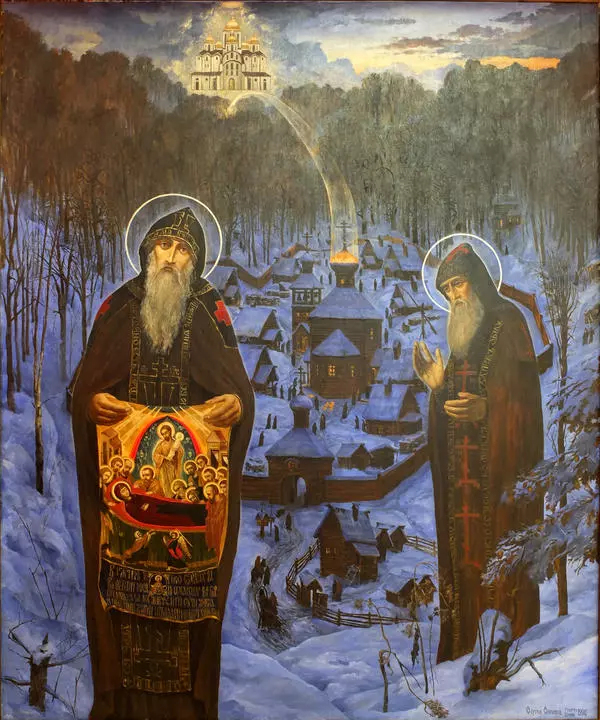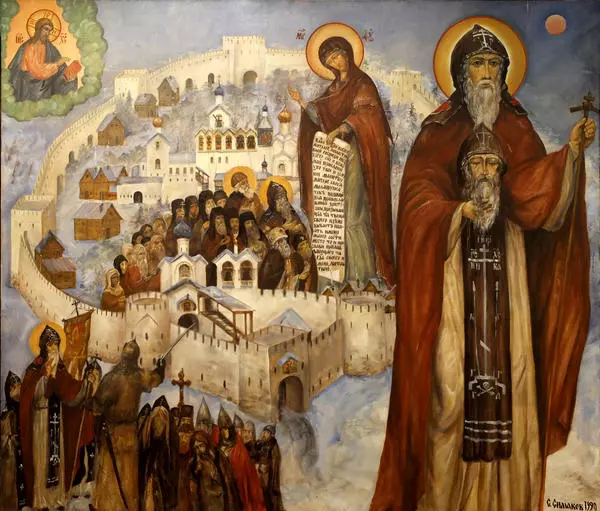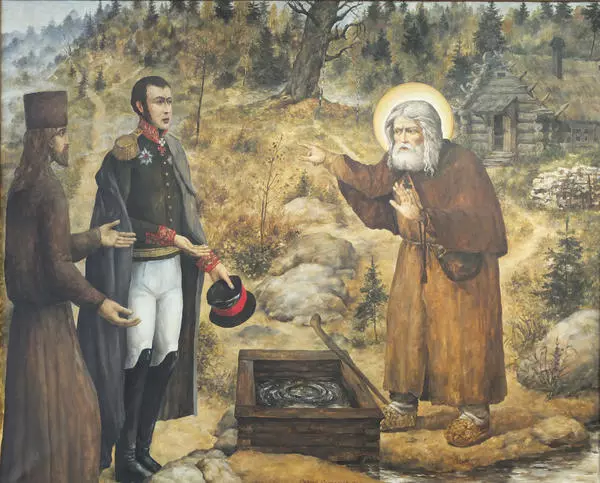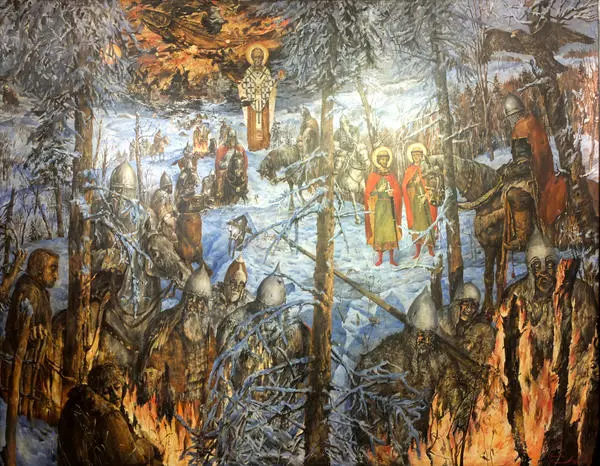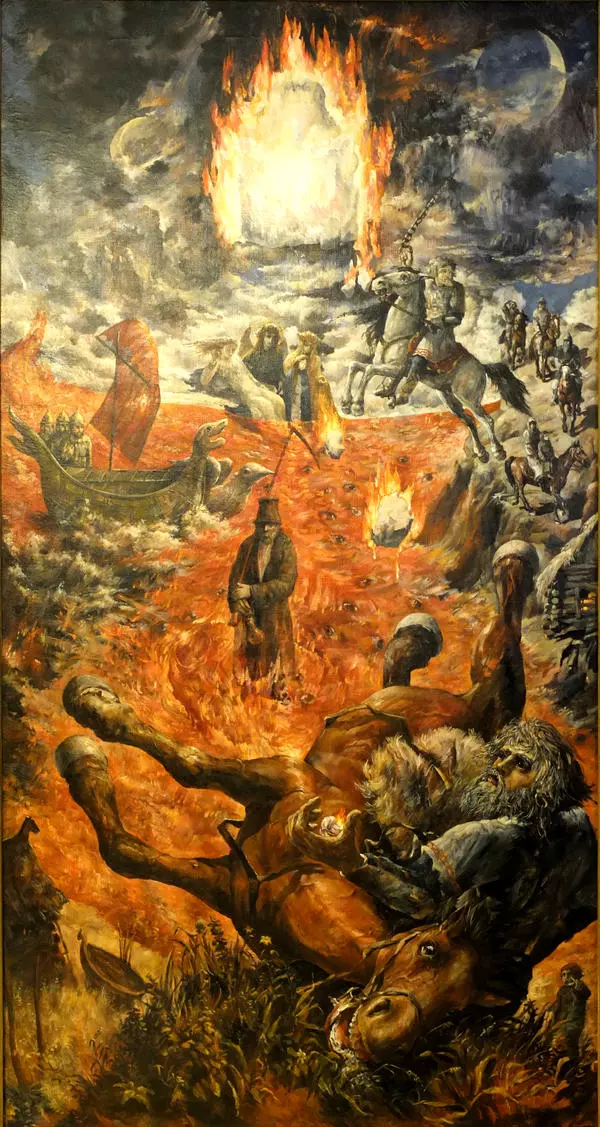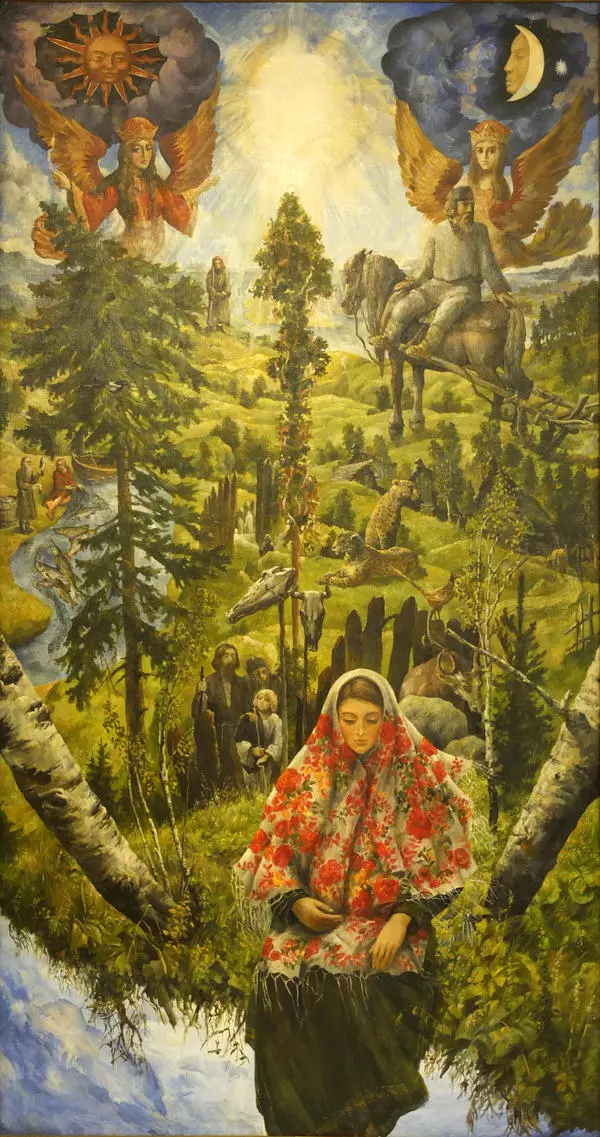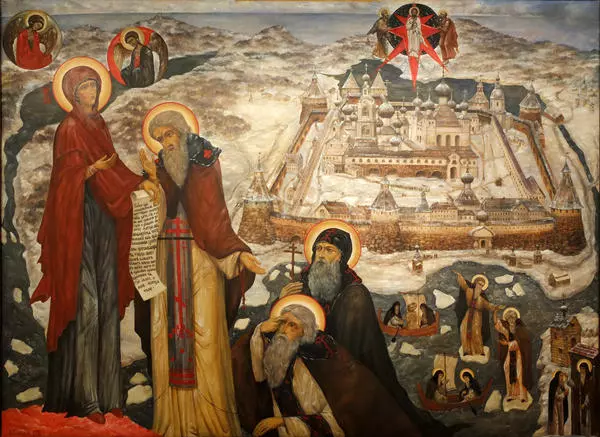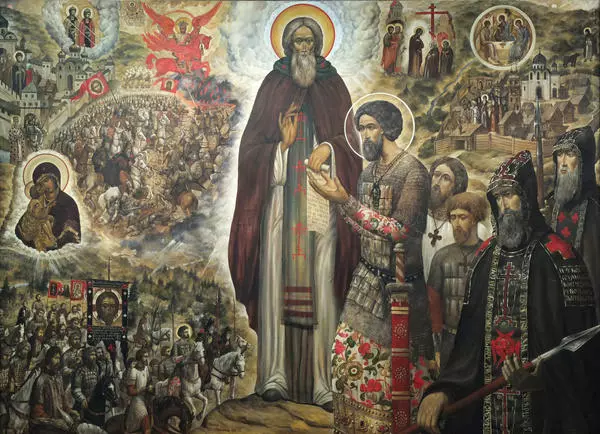Sergei Simakov did this painting in 1990 influenced by the book Hermit Elder Basiliscus. The 1892 book tells about the ascetic life of a meek Orthodox monk in Uglich woods. At that time, the artist had already been officiating at the Church of St. Michael In-the-Wood. According to the book, monk Basiliscus built himself a separate wooden cell near the church. The elder’s grave is near the church’s main part, its altar.
Almost the entire space in the canvas is taken by the image of Basiliscus and the boy. The elder has put his hand on the boy’s shoulder — he is blessing the young pupil and releasing him on his way. According to the legend, during his life near the church, Basiliscus taught peasant children the basics of reading and writing, and he did it so well that just a month into their studies children could read the Book of Psalms, the collection of prayer hymns.
The book tells us that Basiliscus was born in the village of Rylovo in the Kalyazin district of the Tver province in 1790. In 1815, he turned yurodivy, a Holy Fool, an Orthodox ascetic who with his privations gave praise to the sacrifice of Christ. The monk pretended to be dumb, left his native village, suffered assaults from robbers, and once almost drowned in a river.
There is a long tradition of Foolishness for Christ in the Orthodox faith. The first Russian Holy Fool is believed to have been the Venerable Isaac of the Kiev Caves in the eleventh century. He used to be a rich merchant, but, for reasons unknown, gave away all his riches to the poor and became a hermit in the Kiev Monastery of the Caves. According to the legend, the Venerable Isaac spent seven years in total isolation. Once he was visited upon by a daemon disguised as an angel, and as the hermit failed to cross himself, he thus succumbed to temptation, and spent the next two years in a coma. He came around on the third year, healed, and took the vows of a holy fool — suffered hunger, nakedness and abuse in the name of Christ.
In the 1990, a tin plate with the dates of Basiliscus’s life turned up in the cellars of St. Michael’s Church. It also said: God rest the departed soul of your servant, a great worker, man of prayer, comforter of the needy, who suffered feats of pilgrimage, foolishness for God, silence, and hermitage, a faster, seer and wonder-worker. The plate is now fixed on the cross over the elder’s grave.


